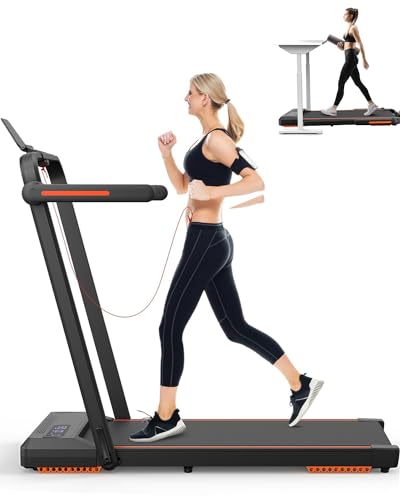
Cheap Treadmill
Add a review FollowOverview
-
Founded Date May 17, 1984
-
Sectors Banking & Financial
-
Posted Jobs 0
-
Viewed 7
Company Description
10 Things Everyone Gets Wrong About The Word “Walking Machine”
The Walking Machine: A Comprehensive Guide to Your Fitness Companion
In today’s fast-paced world, where time is a luxury, preserving a constant exercise regimen can be a difficulty. For numerous, a walking machine– frequently referred to as a treadmill– serves as an ideal fitness buddy. This article supplies a thorough appearance at walking machines, including their advantages, types, upkeep pointers, and frequently asked questions.
Why Choose a Walking Machine?
Walking machines use a practical and reliable method to include cardiovascular workout into life. Here are several essential benefits:

- Convenience: Walking machines permit individuals to exercise anytime, regardless of weather or time restraints. They are perfect for hectic schedules.
- Versatility: Users can stroll, jog, or perform at their own speed and strength.
- Safety: Walking machines provide a lower threat of injury compared to outside walking or running, especially for newbies or those recuperating from injuries.
- Tracking Progress: Many treadmills come with built-in screens that track metrics like speed, range, and calories burned.
Kinds Of Walking Machines
When thinking about a walking machine, it’s important to pick the right type based on private physical fitness goals and area restrictions. Below are the main types of walking machines:
| Type | Description |
|---|---|
| Manual Treadmills | These machines do not have a motor, and users need to stroll or run to rotate the belt. |
| Electric Treadmills | Powered by an electric motor, permitting users to set the speed and slope effortlessly. |
| Folding Treadmills | Designed for easy storage, these treadmills can be folded when not in usage. |
| Desk Treadmills | Perfect for a dual work and workout environment, these compact machines enable walking while working. |
| Incline Trainers | These enable users to mimic uphill walking, improving workout intensity and calorie burn. |
Choosing the Right Walking Machine
Selecting the right walking machine can considerably impact motivation and efficiency. Here are some elements to think about:
Key Features to Look For
- Motor Power: A powerful motor ensures a smooth and constant workout. For periodic walkers, a 1.5 HP motor is usually enough; for heavier usage, search for 3.0 HP and above.
- Belt Size: A larger and longer belt supplies more space for a comfortable stride. Standard sizes range from 16 inches large and 50 inches long.
- Incline Options: Adjustable slope settings can mimic walking or running uphill, increasing the strength of the workout.
- Shock Absorption: Good shock absorption decreases the threat of joint injuries and enhances comfort.
- Console Features: Look for integrated exercises, heart rate displays, and connectivity functions like Bluetooth for a more appealing experience.
Budget Considerations
Walking machines been available in a wide variety of prices, depending on functions and construction quality. Here’s a rough budget breakdown:
| Price Range | Functions |
|---|---|
| Under ₤ 300 | Standard handbook or little electric treadmills with limited features. |
| ₤ 300 – ₤ 700 | More innovative electric treadmills with incline, medium power motors, and better guarantees. |
| ₤ 700 – ₤ 1500 | Premium electric treadmills with bigger integrated screens, substantial features, and service warranties. |
| ₤ 1500 and above | High-end designs offering advanced innovation, features, and long lasting construction for severe fitness lovers. |
Upkeep Tips for Your Walking Machine
To ensure longevity and optimum efficiency of a walking machine, think about the following upkeep tips:
- Regular Cleaning: Dust and sweat can collect on the machine and the belt. Wipe down the surface areas and clean the belt frequently.
- Lubrication: Depending on the design, oiling the running belt regularly can avoid wear and tear. Check the manufacturer guidelines for suggested lubrication schedules.
- Inspection: Periodically examine the machine for loose screws or used parts. Tighten up and change as needed.
- Calibration: Occasionally, check the calibration of your machine’s metrics to guarantee they offer precise data.
- Proper Use: Follow the maker’s recommendations for weight limitations and operational standards.
FAQs About Walking Machines
1. Are walking machines an excellent workout?
Yes, walking machines provide an excellent cardiovascular workout, can assist with weight loss, and improve overall health.
2. How often should I use a walking machine?
Aim for at least 150 minutes of moderate-intensity aerobic activity per week, which can easily be accomplished with regular sessions on a walking machine.
3. Can I slim down on a walking machine?
Yes, including a walking machine regimen into a healthy diet can promote weight loss, particularly if combined with periods and incline training.
4. Is it safe for seniors to utilize a walking machine?
Yes, walking machines can be safe for elders with low-impact settings and safety features like hand rails. However, people ought to talk to their health care company before starting any exercise program.

5. What’s the difference in between a treadmill and a walking machine?
The term “walking machine” generally refers to a treadmill planned for walking, while “treadmill compact” can describe machines utilized for numerous intensities, consisting of running.
With their flexibility and convenience, walking machines can considerably boost one’s fitness journey. By thoroughly picking the best type, making sure appropriate maintenance, and integrating various exercise strategies, users can maximize their walking machine’s benefits. Just like any exercise regimen, consistency is essential to achieving long lasting physical fitness outcomes.

